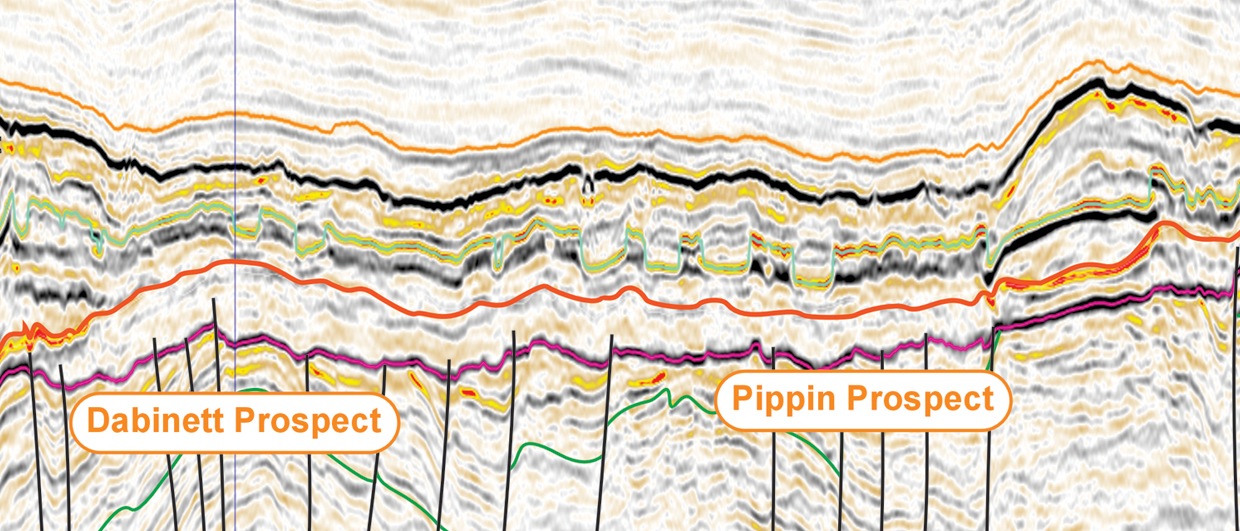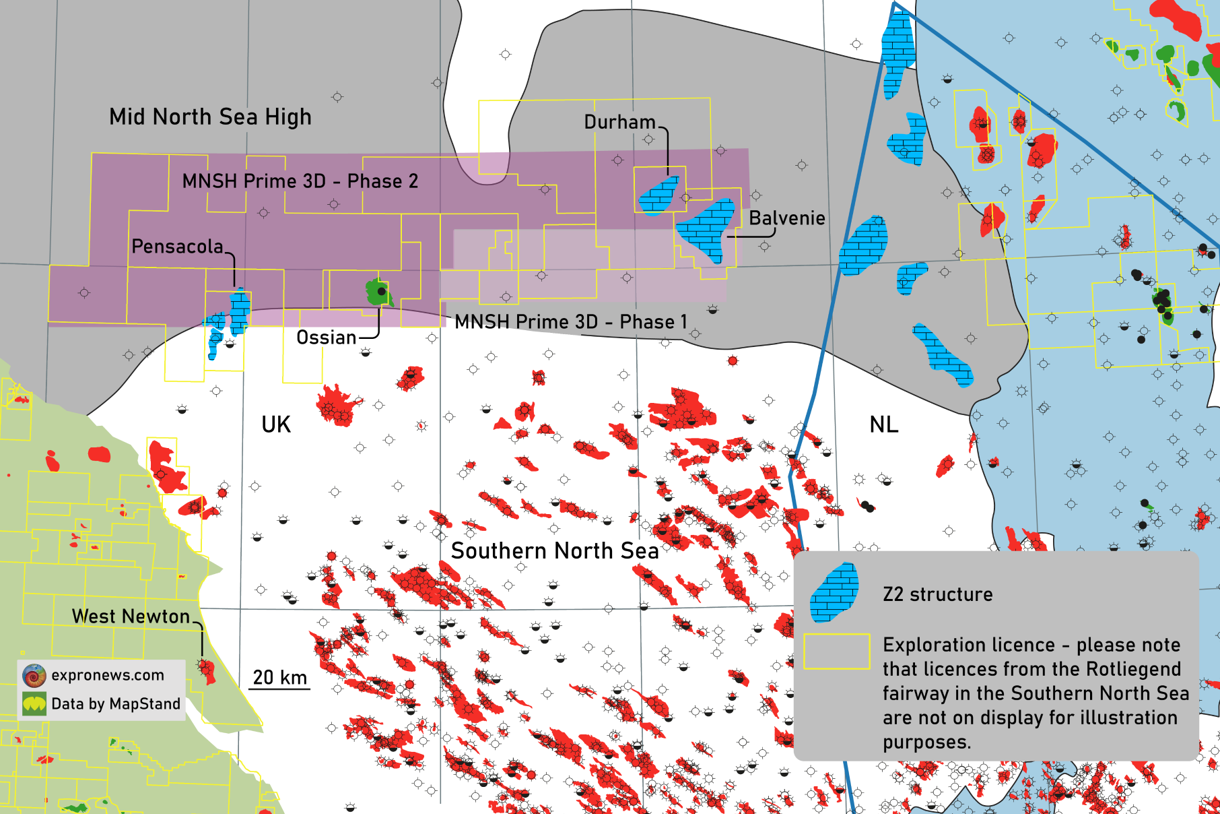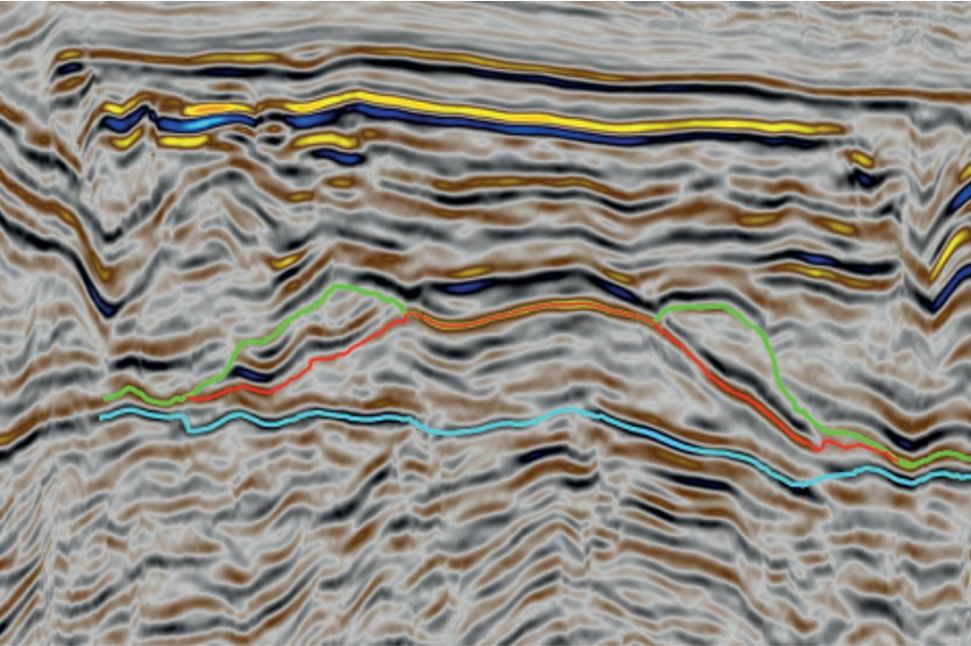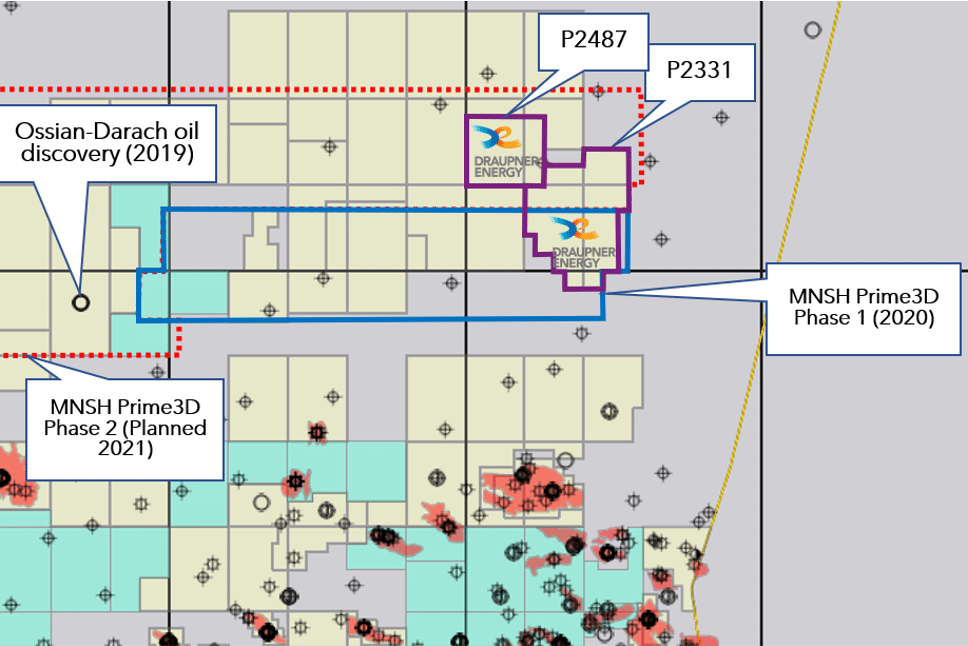The UK mid North Sea High (MNSH) can be considered as one of the least explored hydrocarbon provinces on the UK Continental Shelf. Early drilling campaigns targeted pre-Permian structures, with the Z2 Haupt Dolomite only regarded as a secondary reservoir target, despite the presence of significant hydrocarbon shows in numerous wells. The evaluation of hydrocarbon prospectivity was hindered by the lack of modern 2D and 3D seismic data, and the region was written off as non-prospective, thought to be too far north to receive gas migration from prolific Westphalian coals of the Southern Gas Basin.
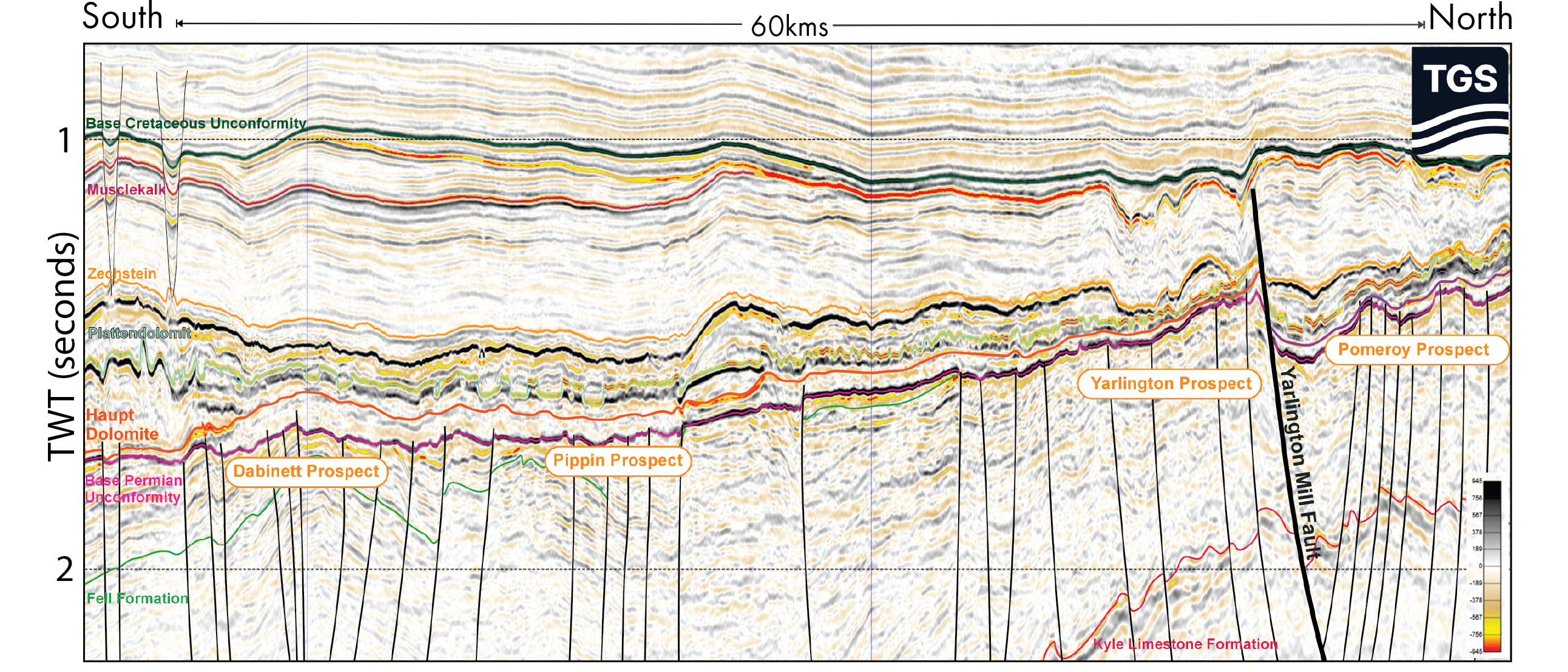
Discoveries like Crosgan, Cygnus and Breagh pushed this understanding in the late 1990’s, for the first time proving hydrocarbon migration onto the flanks of the MNSH and Carboniferous reservoirs. But the Haupt Dolomite required more data, including 3D seismic integrated with a re-evaluation of wells, to allow operators to define the extent and facies distribution of the Haupt Dolomite Carbonate Platform in the MNSH area, the “Orchard Platform”.
Hydrocarbons were discovered at Ossian (2019, Q42), and Pensacola (2022/2023, Q41), demonstrating the Haupt Dolomite to be an excellent reservoir with high deliverability and with significant volumes of hydrocarbons in place. These results have de-risked a new, highly productive source rock system with significant generating capacity in both Zechstein and Mid/Lower Carboniferous sections.
The Haupt Dolomite Play
The Haupt Dolomite (Z2) forms an intriguing intra-Zechstein reservoir unit that spans the Southern Permian Basin and is one of three of such carbonate units contained within the Zechstein Group. It was deposited as an aggradational carbonate platform with margin shoals, platform top and occasionally toe of slope deposits. A high-quality reservoir is composed of peloids, oncoids and ooids.
In the UK, hydrocarbon discoveries in the Haupt Dolomite were made as early as 1938 at Eskdale Moor. Significant volumes of hydrocarbons have been produced from analogue Z2 platform carbonates onshore and offshore in The Netherlands, Germany and Poland.
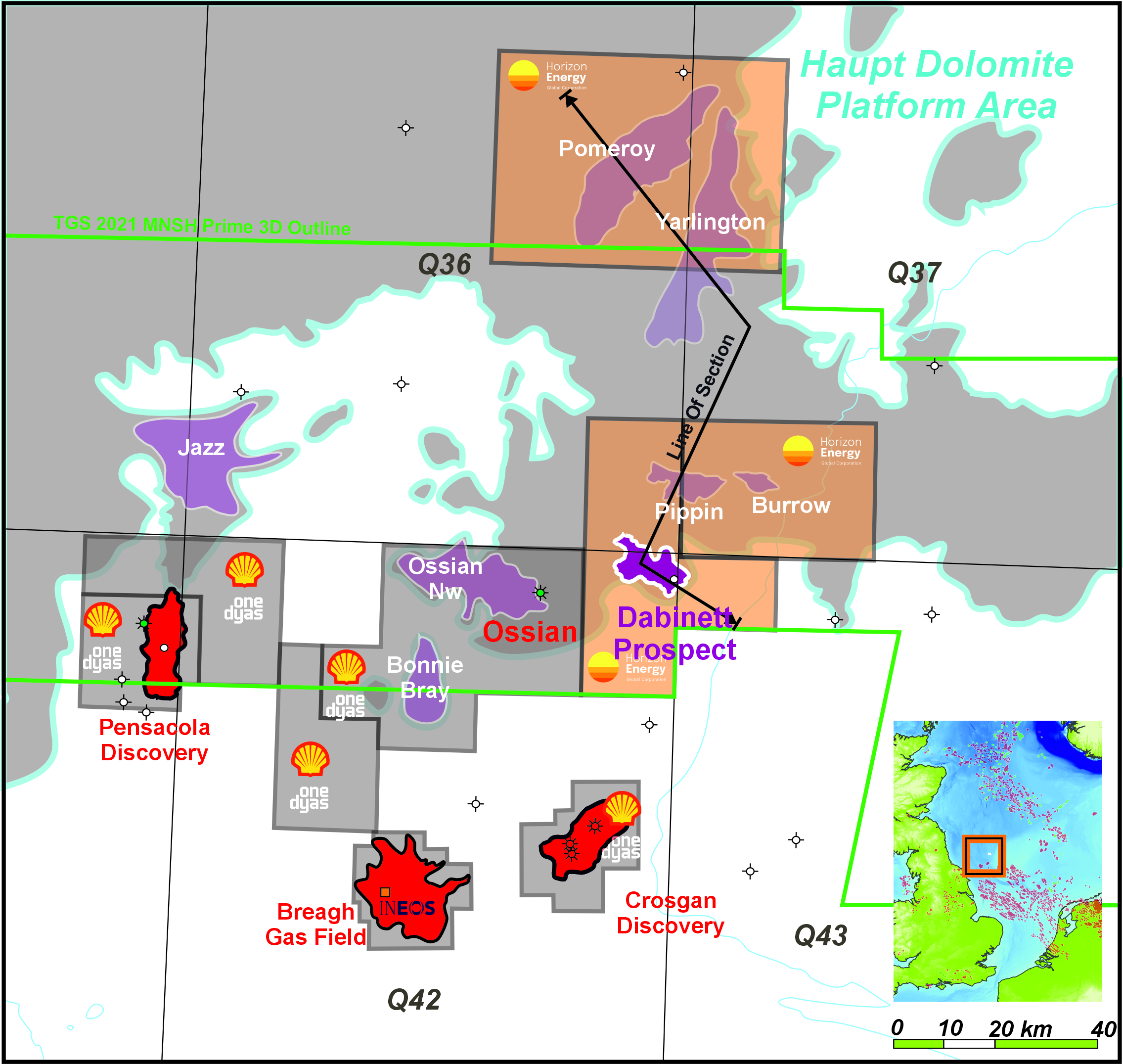
The primary depositional environment is key in controlling the reservoir on the Orchard Platform. The presence of high-energy facies (mostly shoal facies) has been identified from core data in the platform interior, but as yet, these facies are undrilled in the platform margins, where they are expected to be thicker, coarser-grained and have enhanced porosity and permeability. The recent Ossian discovery was drilled at some distance away from the southern margin of the Orchard Platform, whereas the Pensacola well targeted an isolated micro-platform.
Hydrocarbon sourcing for the Haupt Dolomite play is mixed with effective petroleum source rocks in the Zechstein Group and in the Lower Carboniferous, showing a multi-phase charge scenario. Recent discoveries, hydrocarbon shows and slicks, demonstrate the mobility of hydrocarbons, predominantly gas with minor associated oil, migrating from extensive mature source kitchens to the south of the MNSH area. Hydrocarbon migration from Carboniferous source rocks and coals is lateral, up dip and through the underlying Variscan fault network which is widespread across the area. Zechstein generated oils are associated with organic-rich basinal to base of slope facies of the Haupt Dolomite with lateral up-dip migration.
Multiple seals surround the Haupt Dolomite reservoir; it is directly overlain by the Z2 Basal Anhydrite and the Stassfurt Halite. Seal effectiveness is locally proven by the significant overpressure observed in the Ossian well (2130 psi above hydrostatic pressure at 2218.9 m TVDSS).
Derisking the Orchard Platform – The role of new seismic and well data
The MNSH area has always had a data problem, as there wasn’t much of it. Legacy data consisted of low fold, short-offset 2D seismic, limited to small sporadic 2D exploration campaigns and other sparse 2D surveys.
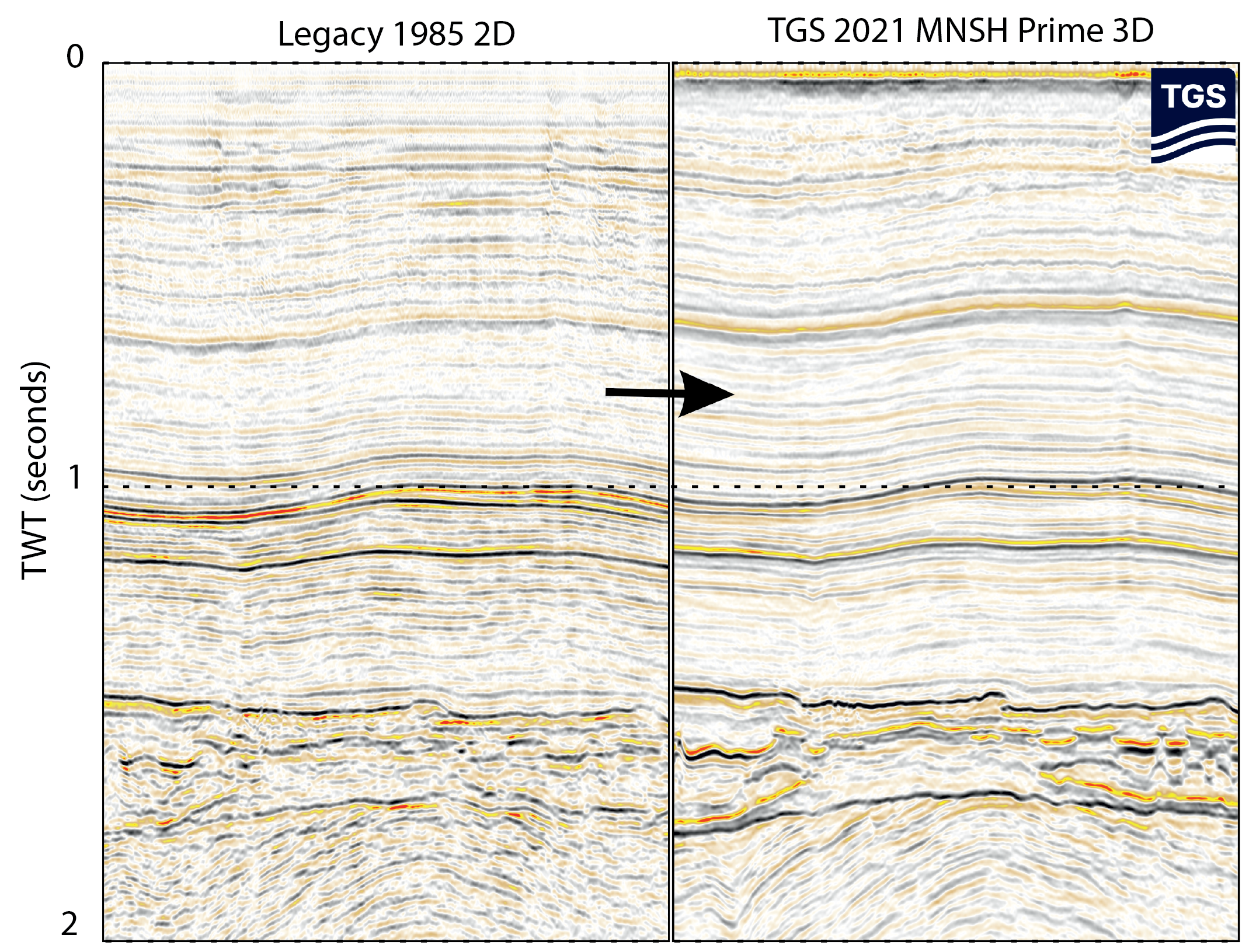
2015 marked a turning point. The OGA (now NSTA) regional 2D survey was released to the industry in time for the 29th Licensing Round, sparking a significant amount of exploration interest. For the first time, mapping of the Haupt Platform extent became possible, allowing explorers to tie together small-scale interpretation into a regional picture. However, more details were needed to define and de-risk prospects. The area required high-resolution 3D seismic. This was acquired only recently, firstly with smaller sub-regional surveys, but then ION acquired the first large-scale regional survey over the area, a behemoth survey covering over 11,600 km² allowing for the first time accurate maps of the Haupt Dolomite Platform being imaged in depth processed clarity.
Well data is old and sparse. In total, 45 wells have been drilled across the province, equivalent to one well per 690 km². However, some of these wells do occasionally contain key information: Core acquired by the early wells being vital.
2019 marked the pivotal year in the play, with the initial discovery in the Ossian well, One-Dyas drilled 42/04-01 and 01Z, with the primary target being the Carboniferous (Darach), and a secondary Haupt objective (Ossian). The well encountered a thin hydrocarbon column (~9 m) in a Haupt reservoir with a gross thickness of around 65 m. Significant overpressure resulted in well-control issues and having to run a liner.
The Ossian Discovery does provide some very tantalising and intriguing insights: Good productivity in sub-optimal reservoir facies along with overpressure and oil at bubble point, showing the potential for a significant up-dip gas accumulation (named Ossian NW).
The Pensacola discovery (well 41/05a-02) was drilled as the first Haupt Dolomite targeted well in 2022 by Shell (operator), Deltic Energy and One-Dyas. Gas and oil were discovered in the Haupt in an isolated micro- platform adjacent to the main Haupt Platform. The well was intended to test a prograding geological model for the Haupt, postulating fringing ‘reefs’. The well results have instead proven these wedge geometries were linked to halite/anhydrite/polyhalite abutting the carbonate platform slope. Similar geometries in evaporitic sequences have been observed in the 43/02-1 well.
The Pensacola well actually encountered the Haupt Dolomite in a slope location, 16 % porosity has been reported pointing to redeposition of oolites shed from the platform top. A reported gas/oil contact at 1,755 m TVDSS shows limited conformity to the structural closure, spilling to the north, highlighting the possibility of a stratigraphic trapping mechanism. Despite the uncertainties, the Pensacola well has proven the presence of both oil and gas in the Haupt, but questions remain as to the true nature of the accumulation. Drilling of an appraisal well is imminent with a rig on location at the time of writing. This well will target the middle section of the isolated platform.
The Crosgan field represents the most appraised of the micro platforms in the UK sector, with three legacy wells. Initially drilled in 1990, well 42/15a-2 was inconclusively tested in the Haupt Dolomite. A fourth appraisal well drilled in mid-2023 by One-Dyas was located in the micro-platform centre, and intersected a 140 m thick section of Haupt reservoir (NSTA, 2023). The well was tested at a maximum flow rate of 26.5 mmscf/d, clearly demonstrating the reservoir potential and deliverability of the Haupt Dolomite. A further appraisal well is planned for early 2025.
An eye to the future
Significant prospectivity has been identified across the Orchard Platform, with an abundance of exploration opportunities existing in a variety of depositional settings. Major structures such as Bonnie Brae (One- Dyas), Jazz (unlicenced) and Ossian Northwest (One-Dyas, Shell) are yet to be tested but show significant promise. Many prospects have been licensed following the conclusion of the UK 33rd Licensing Round.
The Dabinett prospect (mean prospective resources 663 Bscf, Horizon Energy) is a four-way dip closed structure on the southern margin of the Haupt Dolomite Platform, optimally located to receive gas charge and in a highly favourable area for reservoir development. Additional structures include large prospects in the platform interior such as Yarlington and Pomeroy (mean prospective resources of 998 Bscf and 1,466 Bscf respectively- Horizon Energy).
Excellent hydrocarbon charge
Recent drilling success and the availability of new high-quality regional 3D seismic data have addressed previous challenges and risks in the Haupt and the MNSH area in general, thus allowing the multitude of prospects identified to be tested in the jack-up friendly shallow water of the MNSH.
The presence of an over-pressured hydrocarbon accumulation in the Haupt Dolomite of the Orchard Platform has been proven for the first time by the Ossian well. Excellent hydrocarbon charge and the potential for large gas accumulations have also been evidenced by the latest results in Pensacola and Crosgan wells.
High energy shoal facies of the Haupt Dolomite with excellent reservoir properties have been identified in wells of the platform interior. Platform margin areas are expected to be thicker and with enhanced reservoir properties in the yet-to-be-explored margin of the Orchard Platform as seen in analogues such as the BMB field in Poland, where significant productivity occurs in reservoirs with a similar depositional environment to the MNSH.
Acknowledgement
Our thanks go to the management of Horizon Energy and TGS for supporting this article and to TGS for giving permission to show seismic data.

